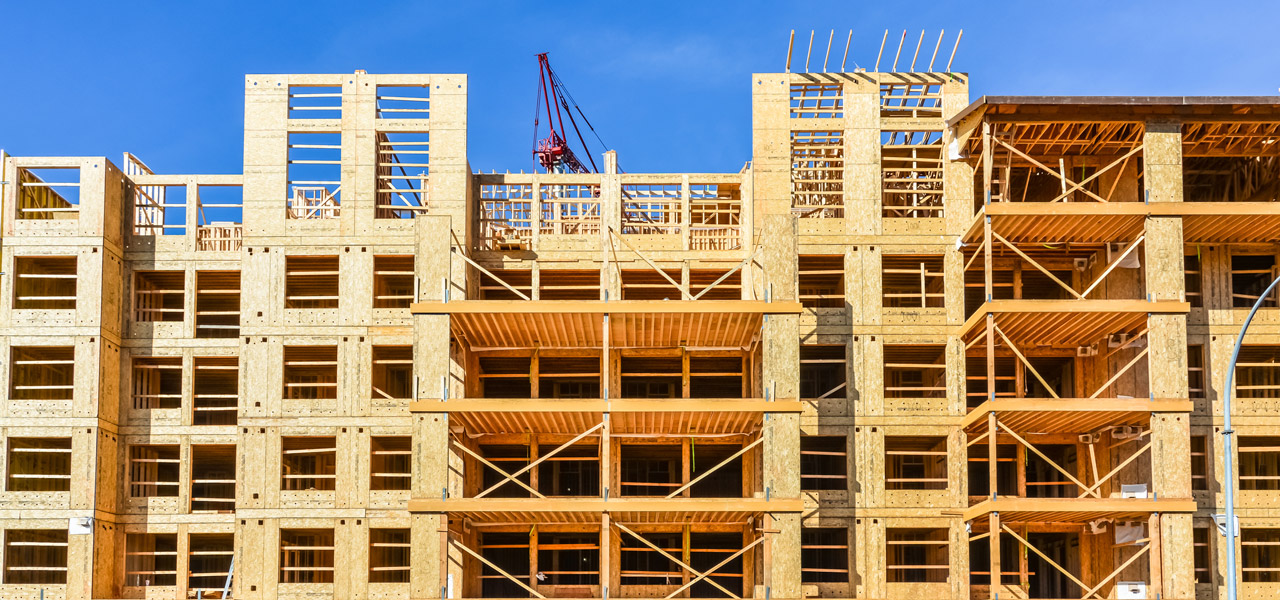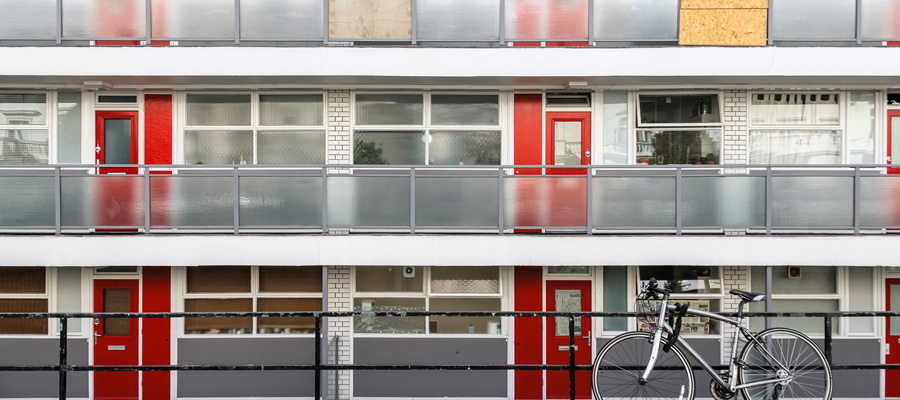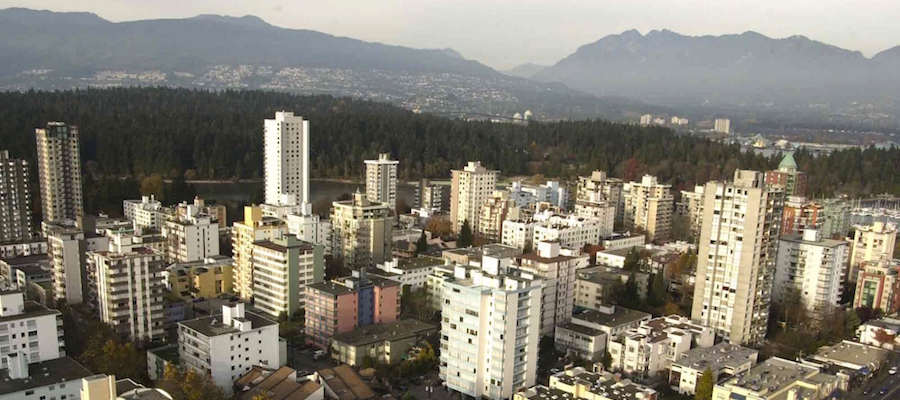Housing platforms and platitudes in the 2018 Vancouver election
It should be no surprise that Vancouver’s growing housing affordability crisis is the top issue going into the election. All candidates are in favour of affordable housing, of course. Sorting out the chatter from concrete plans, however, can be difficult—not least because of the way Vancouver’s municipal politics has fractured going into the election, with some prominent independent mayoral candidates running alongside old and new parties vying for Council seats.
It’s easy for politicians to express support for greater affordability, but what’s the actual plan? How many units and what type? What’s it going to cost and how will they pay for it? What’s the common ground among parties and candidates and where are the divisions? How much can realistically be done at the municipal level anyway?
To find out I attended a forum of mayoral and council candidates on affordable housing to get some insights, then spent some time with the platforms issued by parties.
Note: I am restricting myself to the City of Vancouver in this post, although residents of other municipalities will recognize similar challenges and dilemmas.
Context
For a growing number of households in Metro Vancouver, the housing market is broken. At its core, this is a problem of financialization—the treatment by many actors of housing primarily as an investment, rather than a place to live. The failure of the housing market is evident in the phenomenal cost of purchasing residential real estate, but also in a serious crisis in the rental market, inadequate housing for the most needy, and persistent homelessness. This dynamic is exacerbated by a range of government policies and incentives that are biased towards home ownership.
The soaring price of homes is perhaps the single largest driver of inequality in recent years and is undermining the economic security of low- to modest-income households. Home price inflation has created spectacular windfall capital gains for some homeowners. These gains are similar to lottery winnings, although in many cases these are unrealized as people continue to live in the same home. Those who purchased in recent years may be financially vulnerable to an increase in interest rates or a slowdown in the economy resulting in job loss.
The good news is that the unabated frenzy we’ve seen in the housing market seems to have died down. The market for buying new housing is softening, with sales activity way down compared to a year ago, although prices not so much. Interest rates are now creeping up amid record household debt, while tougher mortgage qualification requirements (stress tests) from the federal government are limiting the number of high-risk mortgages. As a result, the growth of mortgage loans is at 18-year lows. BC’s new housing taxes, still being phased in, are also providing some speed bumps.
With half of the city’s households being renters, the state of the home ownership market tells but part of the affordability story. Renters are stuck not just in terms of being unable to shift into home ownership but also into different rental housing. Vacancy rates for rental housing in Metro Vancouver have been below 1% for several years, and this has pushed up rents dramatically. Many tenants remain vulnerable to displacement due to “renovictions.” Moreover, this dynamic undermines other efforts to reduce poverty.
The soaring price of homes is perhaps the single largest driver of inequality in recent years and is undermining the economic security of low- to modest-income households.
Among Metro Vancouver municipalities, the City of Vancouver has led in a number of areas, often in the absence of provincial and federal support. This includes the Empty Homes Tax (a model for the BC government’s new Speculation Tax), putting City land on the table through the new-ish Vancouver Affordable Housing Agency, using incentives to get new rental housing built, challenging short-term rentals like Airbnb, and putting in place tenant rights policies around displacement. In addition, the City recently stated that a “development contribution expectation” or charge will be applied in the Broadway Corridor to dampen land speculation during the construction of the new Broadway Subway line.
In spite of these actions, the current state of affairs is causing hardship and undermining the economic viability of the city. The conversation leading up to the election is about how to go much further to deliver on housing affordability over the next generation.
Densifying single-family neighbourhoods
What was once an untouchable topic is now a starting point for candidates. Already, “single-family” is somewhat of a misnomer, as secondary suites and laneway homes have been permitted. In late September, Vancouver Council approved a new policy under its Making Room program allowing duplexes as a new housing option in single-family zoned neighbourhoods (opposed by Greens and NPA on Council and several candidates/parties). Staff were also directed to investigate options by Summer 2019 for triplexes, quadplexes and multi-unit buildings in those same neighbourhoods, so the incoming Council will have some important decisions to make.
The new policy, however, does not increase the amount of buildable square feet in those neighbourhoods. For example, a 2,500 square foot home could become two 1,250 square foot half-duplexes. Because of the high starting land values, this may only represent a technical improvement in affordability, limited to some higher-income households.
The terms “gentle density” and “missing middle” are being used to describe this shift, and ideally this would also include increased buildable square footage so that three- and four-storey walk-ups could be built. This is qualitatively different from large new condo developments crammed in at transit hubs and along arterial roads, which have dominated new housing development in the city. Some candidates have proposed that Vancouver needs a city-wide plan to deal with this matter comprehensively. While there are merits in such an idea it is tantamount to delaying action for a few years.
Besides the physical form permitted, what type of housing gets built—non-profit rental, market rental, co-op housing or market condos—is another key question. Gentle density options avoid large developer-driven projects but also lean towards market ownership options. Mayoral candidate Shauna Sylvester (independent) emphasizes co-operative housing and co-housing in her platform, and would fast-track “medium-dense rezonings for community-led co-housing and co-ops in all neighbourhoods.” Many candidates promise to renew leases for existing co-ops to preserve existing affordable housing.
Mayoral candidates Kennedy Stewart (independent) and Ken Sim (NPA), as well as the One City party, are likewise seeking to fast-track approvals and prioritize social housing, supportive housing, seniors’ housing and non-market rental housing through zoning changes. Sylvester also argues for a new housing authority that would enable ordinary service-industry and front-line workers to live closer to where they work.
The good news with housing is that, once built, it provides a stream of rental income. What’s needed is the upfront capital cost, so any bold housing plan needs to identify a revenue source or borrowing requirements. While Stewart, OneCity and COPE propose progressive tax measures to make this happen (more on this below), the NPA’s Sim is silent on how he would fund priority non-market housing.
Capturing windfall gains
The challenge with blanket upzoning of single-family neighbourhoods (whether through the Making Room program or as recommended by YES Vancouver mayoral candidate Hector Bremner), is that this would create windfall capital gains for existing homeowners.
UBC professor Patrick Condon (who had been a mayoral candidate) argues that increases in buildable area per square foot simply get reflected in land prices. For example, if the allowable floor space ratio (FSR) doubles, so will the price of land. In the case of the City’s new Making Room program, there is no increase in buildable square feet, although shifting from a single-family home to a duplex may itself increase the cost per square foot. In my example above, the single-family home worth $2 million may become two $1.25 million half-duplexes.
Several candidates and parties, most notably One City, recognize the need for the City to capture some increase in land values (or “land lift”) from a rezoning that adds density. This is the idea of “land value capture,” and it is also related to the matter of how one would pay for one’s affordable housing ambitions. This idea also applies to new infrastructure; for example, a Skytrain station that benefits nearby residents and could be accompanied by higher property taxes.
Sylvester proposes two streams: an “affordability path,” whereby homeowners redeveloping their lots to build purpose-built rental or other affordable housing would be fast-tracked through the City permitting process; and a “market path,” where homeowners wanting to develop market housing would have to pay a Community Amenity Contribution (CAC), which would then be used to fund or support more affordable housing elsewhere.
Any bold housing plan needs to identify a revenue source or borrowing requirements. The good news with housing is that, once built, it provides a stream of rental income. What’s needed is the upfront capital cost.
CACs are, in theory, the principal means by which the City captures some of the land life (70–80% is the target), associated with rezoning or densification. However, it’s not clear that this target is being achieved. In addition, CACs tend to be negotiated on a case-by-case basis for major developments and often fund amenities (e.g. community centres, child care) that benefit new residents and thus higher property values.
How CACs and land value capture would apply to densifying single-family neighbourhoods is not clear. None of the candidates has put a specific formula/plan on the table, although rather than negotiations with developers, most candidates favour shifting to some sort of rate structure that is known in advance. This makes sense, but presumably there would be differences between rates for more modest developments in single-family neighbourhoods versus full-blown redevelopments like Oakridge. In addition, there is a concern that the rate could be set too low, and would not capture enough of the land lift to reign in land speculation.
Progressive property taxation is another key tool to lean into rising inequality from real estate, capture some of the windfall gains, and to provide funds to build affordable housing. The 2018 BC Budget has made the provincial School Tax progressive, with higher surtaxes above $3 million in assessed value, and another surtax for value above $4 million. However, it has not given local governments the authority to do the same.
Such a shift would enable Jean Swanson and COPE’s proposal for a “mansion tax” of 1% on assessed value above $5 million and 2% on value above $10 million. One City has a similar but slightly more expansive formula for progressive taxation—a 1% tax on the full value of homes assessed at more than $4 million (not just the amount above the threshold) and 2% on those assessed at more than $8 million. In both proposals all proceeds would be used to buy land and fund new affordable non-market housing.
Other big ideas
It’s hard to imagine a scenario where market forces automatically lead to more affordability. Beware the mantra that “more supply” alone is the answer, particularly if no further action is taken on demand side of the market to reign in external capital. Kennedy Stewart speaks to this point in his platform, although details are vague.
Most of the candidates agree on increasing, some suggest tripling, the city’s Empty Homes Tax, which is 2% of assessed value per year (only Hector Bremner and the NPA oppose). This would either add to the pool of rental housing available or would raise funds that could be used to support affordable housing.
Measures to aid renters are key. Mayoral candidate Kennedy Stewart is calling for the creation of a Renters’ Advocate to “make sure renters are treated fairly and stop renovictions.” Jean Swanson and COPE call for a city-wide rent freeze for the next four years. Moreover, they are further calling for a new form of rent control that would be tied to the unit. This would mean that rents cannot be hiked massively when a tenant moves out, and would guard against the vexing problem of renovictions. COPE is also calling for a moratorium on the demolition of rental-only buildings.
It’s hard to imagine a scenario where market forces automatically lead to more affordability. Beware the mantra that “more supply” alone is the answer, particularly if no further action is taken on demand side of the market to reign in external capital.
Rental-only zoning, as proposed by One City and Kennedy Stewart, would also change the market dynamics around housing and reign in land speculation. It could be an effective strategy towards increasing the city’s stock of purpose-built rental units by taking condo developments off the table as a development option.
New modular housing units completed and under development are starting to help the dire crisis of homelessness. However, much more needs to be done. COPE has a notable commitment to house every homeless person in the city, noting that it costs less to house the homeless than to pay in other ways (i.e. through health care, social services, policing, etc.): “The City should build 2,181 modular homes, one for each homeless person counted in Vancouver in six months. At $75,000 a unit, ending homelessness in Vancouver will cost $160 million—less than one year of Mansion Tax revenues.”
Tired old trope #1: Cutting red tape
No one likes red tape and slow bureaucratic processes. However, the flip side is that many regulations are in place for public policy reasons, and when we are building structures that will be there for decades, perhaps hundreds of years, into the future, what’s the rush? While “cutting red tape” makes for good politics, it’s hard to even find a prima facie case that there is a problem here, given the number of construction cranes in place around the city and new buildings opening all the time.
Furthermore, it’s not that obvious that streamlining wait times would contribute to greater affordability anyway. This seems to be a variant of the same old supply argument: if we get more projects up and running then surely this will decrease prices. That said, eliminating minimum parking space requirements for developments in close proximity to transit hubs is a sensible move and would increase the number of housing units that can be accommodated on site.
Both demand (external capital buying up properties as investments) and supply side aspects (more building will increase labour and materials costs) must be considered. Housing demand has been bolstered by external capital flows from outside Canada and from other parts of Canada, but also by a prolonged period of low interest rates, and the transmission of housing gains from parents to children (“the bank of Mom and Dad”). Reigning in demand should build upon efforts like the Empty Homes Tax and regulations on short-term rentals like Airbnb.
Tired old trope #2: Use City land
Almost every candidate favours using City land as a contribution to new affordable housing. But this argument has been around for more than a decade. I’m not convinced there is that much incremental City land that can be put forward. We can densify projects on existing land, perhaps even squeeze some more from land owned by the School Board and Park Board. Sylvester proposes a public audit of the City’s Property Endowment Fund to find out for sure.
An important twist on this, however, would be to use progressive property taxation as a funding source for the City to buy land that can then be used for new non-market housing (as argued by COPE). This would add to the total stock of land owned by the City over time, and could prioritize housing for working-class families (e.g. firefighters, police, etc.) so they can live in the same city where they work.
Final thoughts
It’s good news that housing is the top issue going into the election. Many candidates are throwing out large numbers of new housing units to speak to their commitment to affordability, but are short on details about how to deliver. Voters need to press candidates on what they would do with their limited municipal powers and how they would pay for it.
Bold action by governments is required on both the supply and demand sides of the housing system. The challenge for Vancouver is to table plans that stay relevant to pressing needs and push the envelope in terms of what can be done at the city level. Hopefully, the 2018 election will deliver a mayor and council dedicated to exploring innovative new ideas for affordable housing to support the long-term prosperity of the city.
Topics: Features, Housing & homelessness, Municipalities







